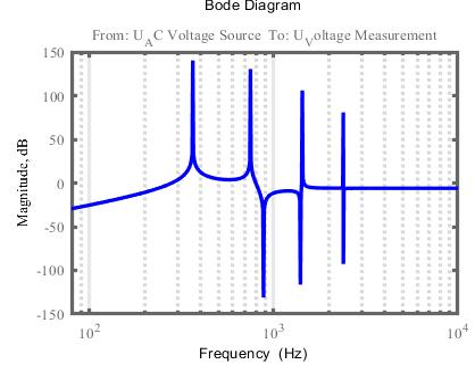Розвиток методів моделювання зовнішнього та середнього вуха людини
Основний зміст сторінки статті
Анотація
Розглядаються основні підходи моделювання роботи зовнішнього та середнього вуха людини. На основі результатів експериментів професора Борисенка О. М. змодельовано зовнішнє і середнє вухо людини за допомогою методу електромеханічних аналогій. У роботі запропоновано розширену модель слухової системи з використанням якої знайдено парціальні частоти елементів, які входять до складу зовнішнього та середнього вуха людини.
Блок інформації про статтю

Ця робота ліцензується відповідно до Creative Commons Attribution 4.0 International License.
Автори, які публікуються у цьому журналі, погоджуються з наступними умовами:- Автори залишають за собою право на авторство своєї роботи та передають журналу право першої публікації цієї роботи на умовах ліцензії Creative Commons Attribution License, котра дозволяє іншим особам вільно розповсюджувати опубліковану роботу з обов'язковим посиланням на авторів оригінальної роботи та першу публікацію роботи у цьому журналі.
- Автори мають право укладати самостійні додаткові угоди щодо неексклюзивного розповсюдження роботи у тому вигляді, в якому вона була опублікована цим журналом (наприклад, розміщувати роботу в електронному сховищі установи або публікувати у складі монографії), за умови збереження посилання на першу публікацію роботи у цьому журналі.
- Політика журналу дозволяє і заохочує розміщення авторами в мережі Інтернет (наприклад, у сховищах установ або на особистих веб-сайтах) рукопису роботи, як до подання цього рукопису до редакції, так і під час його редакційного опрацювання, оскільки це сприяє виникненню продуктивної наукової дискусії та позитивно позначається на оперативності та динаміці цитування опублікованої роботи (див. The Effect of Open Access).
Посилання
G. I. Mikhasev and I. L. Slavashevich, “Sobstvennyye chastoty kolebatel’noy sistemy srednego ukha posle total’noy rekontruktsii [Eigenfrequencies of the middle ear vibrational system after total reconstruction],” Bull. St. Petersbg. State Univ. Ser. 1. Math. Mech. Astron., no. 3, pp. 107–116, 2012.
G. I. Mikhasev, M. A. Firsov, and V. P. Stnikov, “Modelirovaniye svobodnykh kolebaniy zvukoprovodyashchey sistemy rekonstruirovannogo srednego ukha [Modeling of free vibrations of the sound-conducting system of the reconstructed middle ear],” Russ. J. Biomech., no. 1, pp. 52–62, 2005, URL: http://vestnik.pstu.ru/get/_res/fs/file.pdf/2329/%25C3.%25C8.+%25CC%25E8%25F5%25E0%25F1%25E5%25E2%252C+%25CC.%25C0.+%25D4%25E8%25F0%25F1%25EE%25E2%252C+%25C2.%25CF.+%25D1%25E8%25F2%25ED%25E8%25EA%25EE%25E2.+%25CC%25EE%25E4%25E5%25EB%25E8%25F0%25EE%25E2%25E0%25ED%25E8%25E5+%25F1%25E2%25EE%25E1%25EE%25E4%25ED%25FB%25F5+%25EA%25EE%25EB%25E5%25E1%25E0%25ED%25E8%25E9+%25E7%25E2%25F3%25.
J. Flanagan, Analiz, sintez i vospriyatiye rechi [Analysis, synthesis and perception of speech]. 1968.
H.-J. Beer et al., “Finite Element Modeling of the Human Eardrum and Applications,” in Middle ear mechanics in research and otosurgery, 1996, pp. 40–47.
H.-J. Beer et al., “Modelling of Components of the Human Middle Ear and Simulation of Their Dynamic Behaviour,” Audiol. Neurotol., vol. 4, no. 3–4, pp. 156–162, 1999, DOI: 10.1159/000013835.
S. А. Naida, “Matematicheskaya model’ srednego ukha cheloveka [Mathematical model of the middle ear of a person],” Electron. Commun., no. 15, pp. 49–50, 2002.
S. А. Naida, “Chastotnyye kharakteristiki koeffitsiyenta davleniya slukhovymi kostochkami i akusticheskogo refleksa [Frequency characteristics of the pressure coefficient of the auditory ossicles and acoustic reflex],” Electron. Commun., no. 19, pp. 11–16, 2003.
V. S. Didkovskyi, S. A. Naida, O. A., Zubchenko, “Technique for Rigidity Determination of the Materials for Ossicles Prostheses of Human Middle Ear,” Radioelectronics and Communications Systems, 2015, V. 58, No. 3, pp. 134-138, DOI: 10.3103/S073527271503005X
V. S. Didkovskyi, S. A. Naida, “Building-up principles of auditory echoscope for diagnostics of human middle ear,” Radioelectronics and Communications Systems, 2016, V. 59, No. 1, pp. 39-46. DOI: 10.3103/S0735272716010039.
O. N. Borisenko, Y. A. Sushko, I. A. Srebnyak, and G. S. Serbin, “Vliyaniye izmeneniya ob"yema polostey srednego ukha na peredachu zvuka [The effect of changes in the volume of the cavities of the middle ear on sound transmission],” in Problema reabilitatsii v otolaringologii. III plenum pravleniya Rossiyskogo obshchestva otolaringologov, 2003.
S. A. Nayda, "Formula serednogo vuha v normi. Vidbittya zvuku vid barabannoYi peretinki [The formula of the middle ear is normal. Reflection of sound from the tympanic membrane]," Akustichniy visnik, vol. 5, no. 3, pp. 46-51, 2002.
W. Darlid, "Estimating bone conduction transfer function using optoacoustic emissions," The Journal of the Acoustical Society of America, vol. 114, no. 2, pp. 907-917, 2003, DOI: https://doi.org/10.1121/1.1582436.
K. V. Frolov, I. F. Goncharovich and P. P. Lihnov, Infrazvuk, vibratsiya, cheloveek [Infrasound, vibration, man], М.: Mashinostroenie, 1996, p. 304.
G. Bekeshi, V.A. Rozenblit. Mekhanicheskiye svoystva ukha [The mechanical properties of the ear], London 1951, p.683-691.





